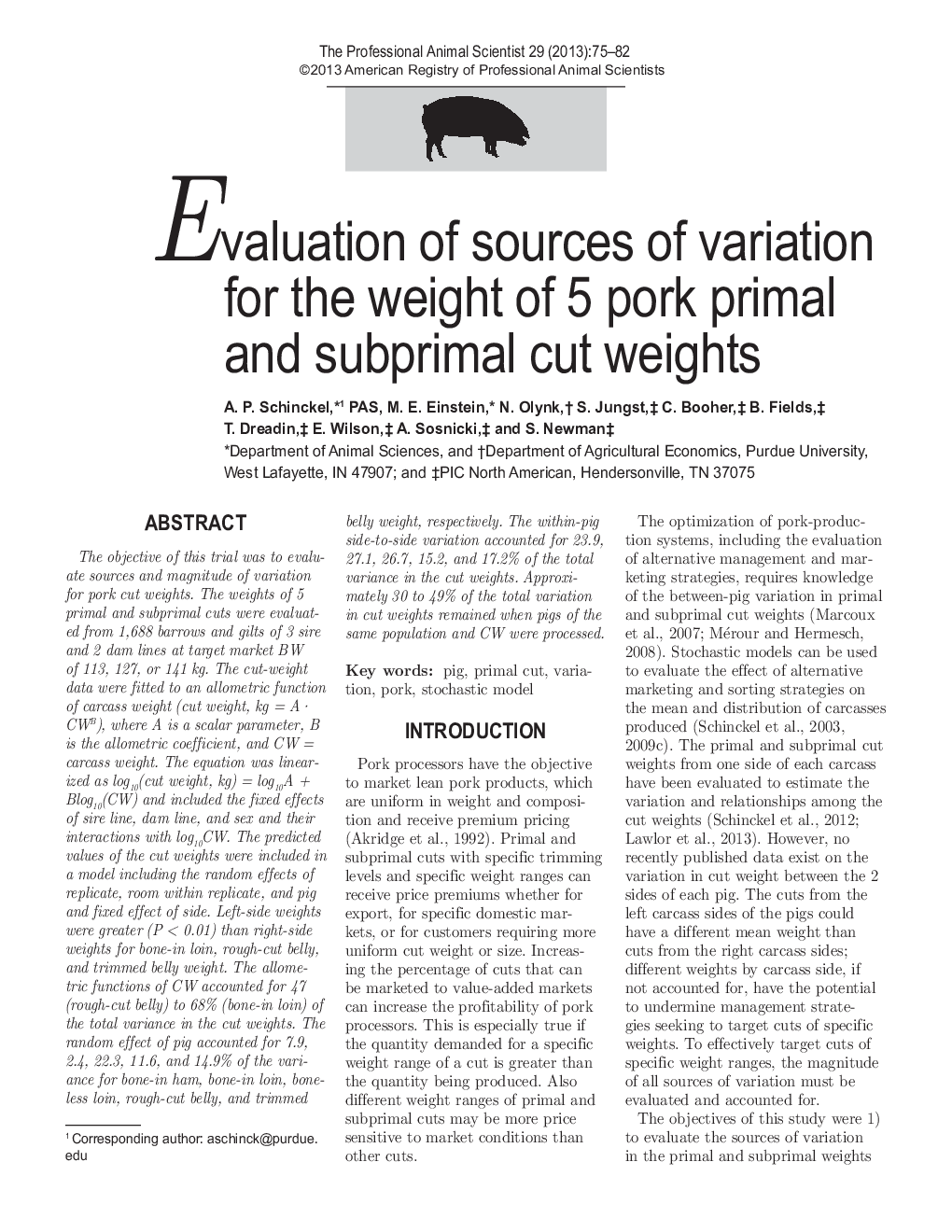| Article ID | Journal | Published Year | Pages | File Type |
|---|---|---|---|---|
| 2454041 | The Professional Animal Scientist | 2013 | 8 Pages |
Abstract
The objective of this trial was to evaluate sources and magnitude of variation for pork cut weights. The weights of 5 primal and subprimal cuts were evaluated from 1,688 barrows and gilts of 3 sire and 2 dam lines at target market BW of 113, 127, or 141 kg. The cut-weight data were fitted to an allometric function of carcass weight (cut weight, kg = A · CWB), where A is a scalar parameter, B is the allometric coefficient, and CW = carcass weight. The equation was linearized as log10(cut weight, kg) = log10A + Blog10(CW) and included the fixed effects of sire line, dam line, and sex and their interactions with log10CW. The predicted values of the cut weights were included in a model including the random effects of replicate, room within replicate, and pig and fixed effect of side. Left-side weights were greater (P < 0.01) than right-side weights for bone-in loin, rough-cut belly, and trimmed belly weight. The allometric functions of CW accounted for 47 (rough-cut belly) to 68% (bone-in loin) of the total variance in the cut weights. The random effect of pig accounted for 7.9, 2.4, 22.3, 11.6, and 14.9% of the variance for bone-in ham, bone-in loin, boneless loin, rough-cut belly, and trimmed belly weight, respectively. The within-pig side-to-side variation accounted for 23.9, 27.1, 26.7, 15.2, and 17.2% of the total variance in the cut weights. Approximately 30 to 49% of the total variation in cut weights remained when pigs of the same population and CW were processed.
Keywords
Related Topics
Life Sciences
Agricultural and Biological Sciences
Animal Science and Zoology
Authors
A.P. PAS, M.E. Einstein, N. Olynk, S. Jungst, C. Booher, B. Fields, T. Dreadin, E. Wilson, A. Sosnicki, S. Newman,
